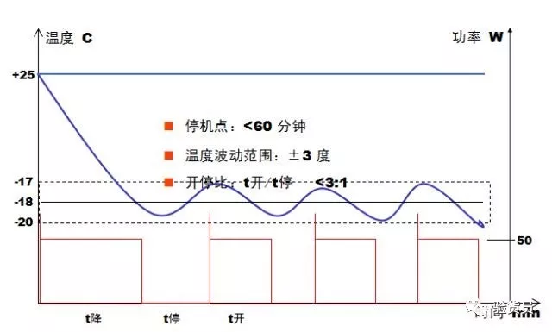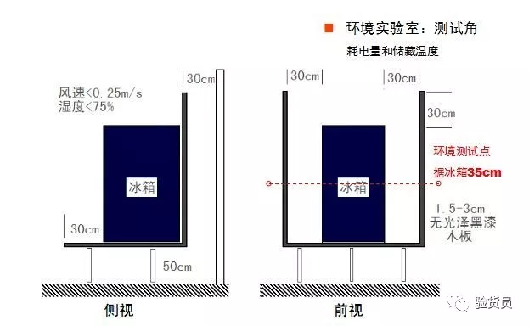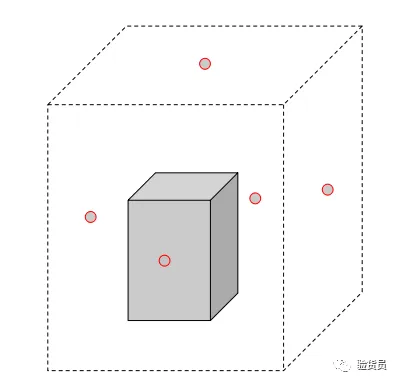Refrigerators make it possible to preserve many ingredients, and their usage rate is very high. They are commonly used in household life. What special attention should be paid to when inspecting and inspecting refrigerators?

1.Appearance
1) Appearance/workmanship defect characteristics:
(1) More intuitive, referring to problems that can be seen at a glance
(2) In addition to visual inspection, you can also touch and inspect defects with your hands
2) Conventional appearance defects:
Dirty, scratched, rusted, cracked, missing, loose, misaligned, and burrs
3) Unique appearance defects of refrigerator products:
(1) Door sealing strip: deformation, opening angle, overflow, demagnetization, air leakage
(2) Plastic end stop of door: white marks
(3) Shell: Wave marks on the top of the built-in condenser
(4) Door/box body: dents, protrusions, and layering caused by poor foaming
(5) Poor coordination: adjustment of drawers, shelves, etc., interference with pushing and pulling
(6) Knob, button: not flexible and stuck, too loose to lock in place
(7) Panel: Poor LED display and indicator lights
(8) Compressor compartment: pipeline interference, pipeline and wiring interference, messy
2.Function
1) What is a functional issue?
It is a defect that affects the use and requires instrument testing. Both basic functions (cooling, storage, etc.) and auxiliary functions (lighting, defrosting, etc.) should be both functional and durable, while also avoiding abnormal functions (noise, etc.).
2) The functions of the refrigerator:
(1) Basic functions (related to refrigeration)
(2) Auxiliary functions (convenient to use)
3) Basic functions (in terms of refrigeration):
(1) Storage temperature
(2) Cooling speed
(3) Ice making ability
4) Auxiliary functions (operational aspect):
(1) Automatic defrosting
(2) Door light linkage switch
(3) Glass door defogging
(4) Magnetic door seal
(5) Horizontal door hovering at 45 degrees
3.Performance
1) The performance of the refrigerator:
(1) Power consumption: rated value ≤ 115% of the limit value
(2) Storage temperature
(3) Noise: rated value<standard limit, measured value<rated value+3 decibels
(4) Total effective volume: measured value>97% of rated value
(5) Freezing capacity: measured value ≥ 85% of rated value, ≥ minimum limit 4.5kg/100L, 2kg/24h
(6) Sealing performance of refrigeration system: annual leakage not exceeding 0.5g
4.Safety
1) Safety of refrigerators:
(1) Logo
(2) Anti electric shock protection
(3) Stability and mechanical hazards
(4) Internal wiring
(5) Power connection and external flexible cables
(6) Terminal blocks for external wires
(7) Grounding measures
(8) Fever
(9) Leakage current at operating temperature
(10) Electrical strength at operating temperature
(11) Leakage current (cold state)
(12) Electrical strength (cold state)
(13) Leakage current (moisture test)
(14) Electrical strength (moisture test)
The testing method for refrigerators:
Online testing
1. Safety testing
Electrical strength 1800 V for 3 seconds without breakdown
Leakage current ≤ 0.75 mA
Grounding resistance ≤ 0.5 ohm
Insulation resistance ≥ 2 M ohm
Starting voltage 85% rated voltage
2. Leak detection test
Instrument: Multi working substance halogen leak detector
Location: Welding points for each pipeline
Leakage value ≤ 0.5 g/year
3. Refrigeration performance testing
1) Cooling speed
2) Start stop time
3) Temperature range

Performance testing
1. Power consumption and storage temperature
1) Conduct in environmental laboratory
2) Storage temperature test, environmental temperature requirements:
SN type+10 ℃ and+32 ℃
N-type+16 ℃ and+32 ℃
ST type+16 ℃ and+38 ℃
T-type+16 ℃ and+43 ℃
3) Power consumption test, ambient temperature requirements:
T-type+32 ℃, others+25 ℃

4) Load package
Test package: Normal load, no thermocouple
M package: Temperature measurement package, containing thermocouple copper column, 50x100x100cm, 500g
2. Noise testing
1) Conducted in an anechoic chamber
2) Noise
Envelope surface: The bottom surface coincides with the bottom surface of the refrigerator
Other five sides: parallel to each side of the refrigerator, 1 meter away
Measure the noise LpA at the center points of five surfaces

3) Noise
Label values on nameplates and energy consumption labels: must comply with standard limits
Actual measured noise: less than the marked value+3 decibels, considered qualified
4) GB196061 Limits
Below 250 liters: direct cooling<45 dB (A), air-cooled<47 dB (A), freezer<47 dB (A)
Above 250 liters: direct cooling<48 dB (A), air-cooled<48 dB (A), freezer<55 dB (A)
Attachment. Key content related to refrigerators
1. Classification of refrigerator products
1) Classified by refrigeration temperature:
a) Refrigerator (represented by the Chinese Pinyin letter C)
b) Refrigerator (represented by the Chinese Pinyin letter CD)
c) Freezer (represented by the Chinese Pinyin letter D)
2) Classified by cooling method:
a) Natural convection cooling (direct cooling), without labeling letters
b) Forced air circulation cooling (air-cooled) and frost free system, represented by the Chinese Pinyin letter W
3) Classified by purpose:
a) Refrigerator (mainly for refrigeration)
b) Freezer (mainly for freezing)
c) Wine cabinet (mainly refrigerated)
4) Classified by climate type:
5) Classified by freezing temperature:
a) One star rating: below -6 ℃
b) Two star rating: below -12 ℃
c) Three star rating: below -18 ℃
d) Four star rating: below -18 ℃, with quick freezing function
2. Related terms
1) Refrigerating appliance
An insulated box assembled in a factory, consisting of one or more compartments, with a suitable volume and structure for household use, using natural convection or frost free systems (forced convection), and consuming one or more energy to obtain cooling capacity.
2) Refrigerator
A refrigeration device used for storing food, with at least one compartment suitable for storing fresh food, code C.
3) Refrigerator freezer
At least one compartment is a refrigerated room suitable for storing fresh food, and at least another compartment is a freezer room suitable for freezing fresh food and storing frozen food under "three-star" storage conditions, code CD.
4) Food freezer
A refrigeration device with one or more compartments suitable for lowering food from ambient temperature to -18 ℃, and suitable for storing frozen food under "three-star" storage conditions, code D.
5) Frost free system
The system automatically operates to prevent the formation of persistent frost layers, adopts forced air circulation refrigeration, and defrosts one or more evaporators through an automatic defrosting system, and the defrosting water is automatically discharged.
6) Fresh food storage department
A compartment used for storing food that does not require freezing, and can also be divided into some small compartments.
7) Cooling room cellular department
A room used for storing certain special foods or beverages, with a higher temperature than a refrigerated room.
8) Ice greenhouse chill department
Specially designed for storing food that is prone to spoilage, and has a capacity of at least two "M" bags.
9) Ice making department
A low-temperature compartment specifically designed for freezing and storing ice cubes.
10) One star department
A frozen food storage room with a storage temperature not exceeding -6 ℃.
11) Two star department
A frozen food storage room with a storage temperature not exceeding -12 ℃.
12) Three star department
A frozen food storage room with a storage temperature not exceeding -18 ℃.
13) Food freezer compartment
Four star department
A room that can lower food from ambient temperature to below -18 ℃ and is suitable for storing frozen food under three-star storage conditions.
14) Variable temperature department
A separate compartment outside the compartments defined in sections 3.3.1-3.3.5 of the standard, provided that the appliance has a refrigerated and refrigerated compartment. The temperature can be independently controlled, and the temperature range included in existing refrigeration rooms, ice greenhouses, and first, second, and three-star frozen food storage rooms should be changed within two or more temperature ranges.
15) Gross volume
The volume enclosed by the inner wall of a refrigeration appliance or a compartment with an outer door when the door or lid is closed and without internal accessories.
16) Effective storage volume
The remaining volume after subtracting the volume occupied by each component and the space that cannot be used for storing food from the gross volume of any room.
17) Load limit
The surface that surrounds the effective volume of frozen food.
18) Load limit line
A permanent mark indicating the effective volume limit for storing frozen food at the three-star level.
19) Storage plan
Layout arrangement of test packages inside refrigeration appliances
20) Energy consumption
The electrical energy consumption calculated for refrigeration appliances covered by this standard over a 24-hour operating cycle.
21) Storage temperature
The average temperature inside the refrigerator
22) Freezing capacity
When conducting experiments according to regulations, the quantity of food (test kits) that can be frozen to -18 ℃ within 24 hours is measured in kg.
23) Ice making capacity
The amount of ice produced by the automatic ice making device of the refrigeration device within 24 hours, or the time when the water in the ice making box of the refrigeration device freezes into ice.
24) Automatic defrosting
There is no need to start manual defrosting during defrosting, and after defrosting, there is no need to manually restore its normal operation and automatically discharge defrosting water.
25) Manual defrost
When defrosting, it is necessary to manually start defrosting, and after defrosting, it is also necessary to manually restore its normal operation. The defrosting water can be automatically or manually discharged.
26) Test package
Simulate the load of food when conducting performance tests in frozen food storage rooms and ice temperature chambers, or when conducting freezing capacity tests in refrigerated boxes.
27) M package
Test package with temperature sensing element installed at the geometric center
28) Stable operating conditions
The average temperature and power consumption of refrigeration appliances are in a stable state.
29) ambient temperature
In the experiment, measure the temperature of the environmental space in which the refrigeration device is located.
30) Temperature rise time of load temperature rise
The time required for the temperature of food in the freezer to rise from -18 ℃ to -9 ℃ after the interruption of the refrigeration system operation.
31) Refrigerant
The fluid that transfers heat through phase change in a refrigeration system absorbs heat at low temperatures and pressures, and releases heat at high temperatures and pressures.
32) Condenser
A heat exchanger in which compressed gaseous refrigerant releases heat to an external medium and is liquefied.
33) Evaporator
A heat exchanger in which the liquid refrigerant, after being depressurized, absorbs heat from the surrounding medium and is vaporized, thereby cooling the surrounding medium.
3. Model name of refrigerator:
BCD-200A: 200 liter refrigerated freezer, first improved version
Post time: May-11-2024





